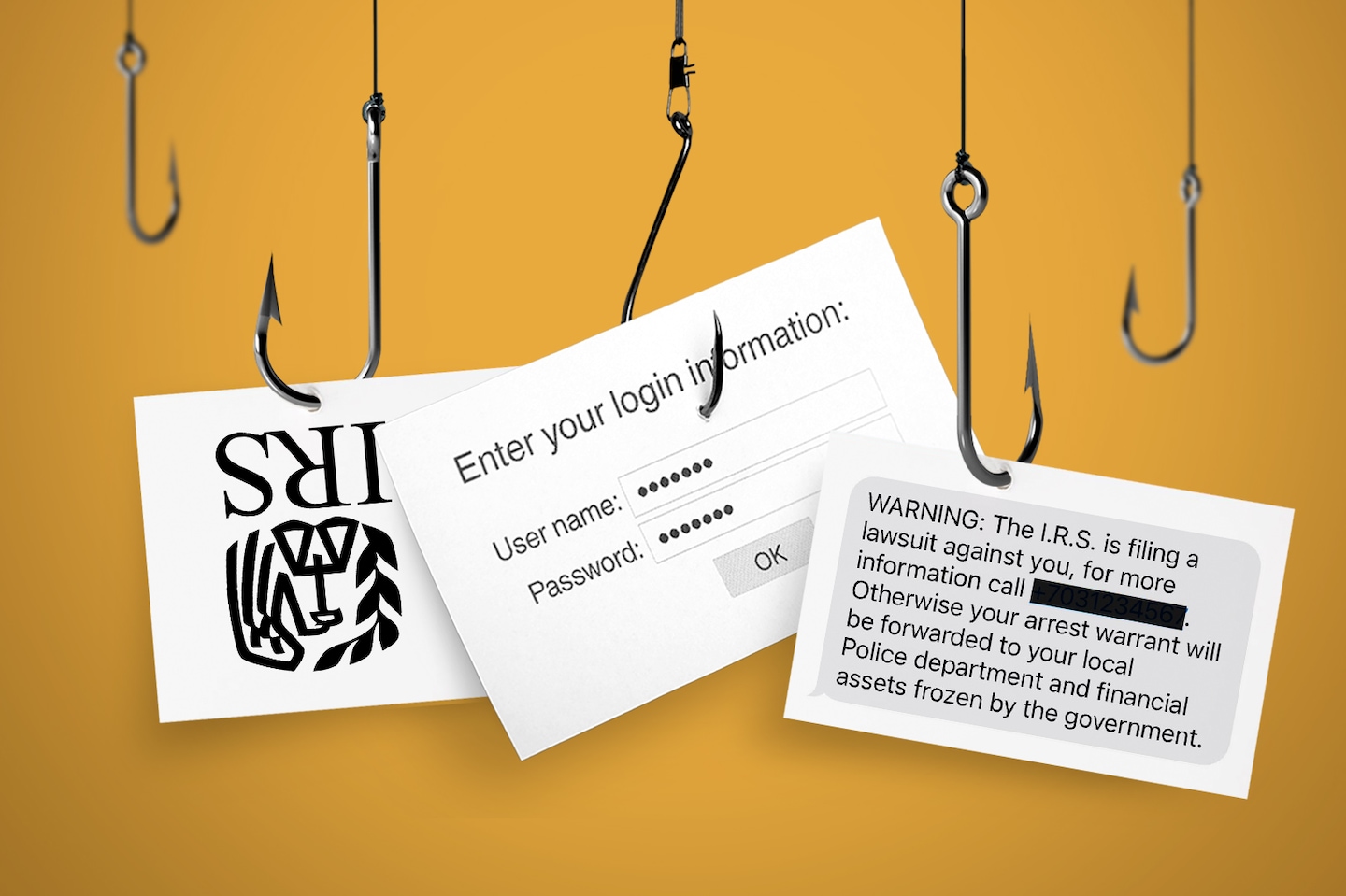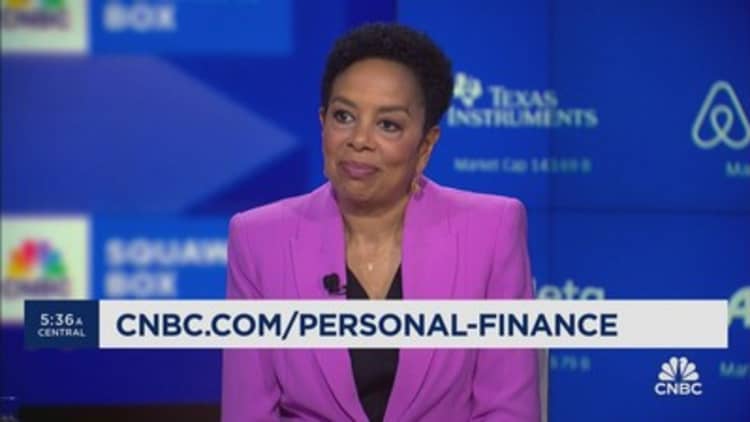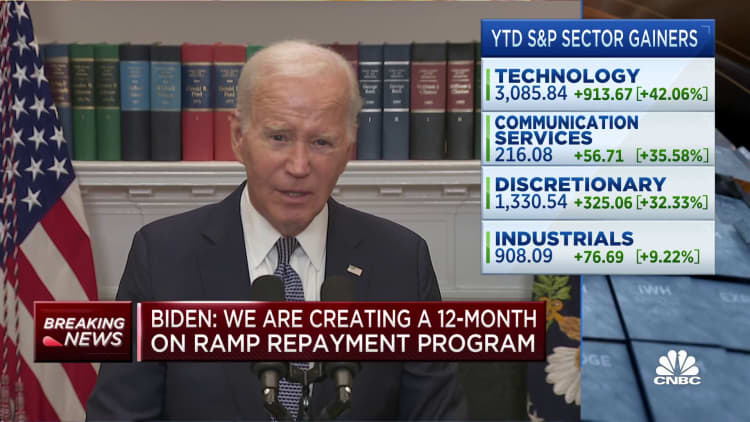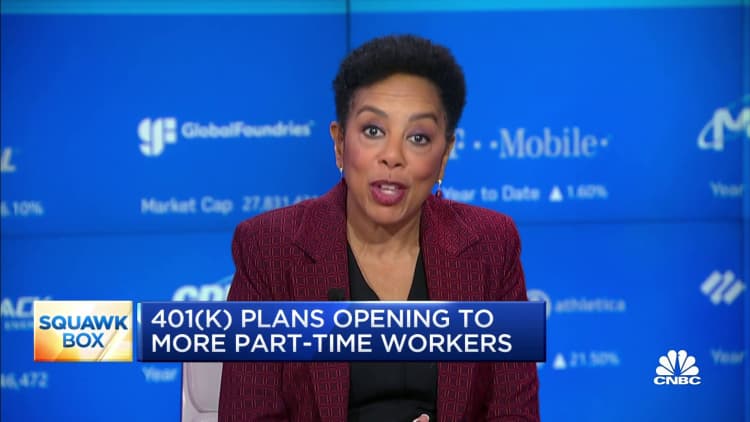Do you know who loves tax season?
Personal Finance
Tax time is prime time for scammers and scheming tax preparers
Published
1 month agoon

But soon the IRS will have in place a system that could be extraordinarily helpful in protecting people from scammers impersonating the agency, according to IRS Commissioner Danny Werfel.
This is how it would work. If you get an email, call or text message, all you have to do is go to your IRS online account. Once you sign on, a green banner will indicate the agency is not trying to reach you. It will be a clear and easy way to verify whether someone is trying to scam you.
However, a red banner means the IRS is trying to reach you. If that’s the case, you will contact the agency directly.
“The goal is for this to be ready for next filing season,” Werfel said.
Folks, you have to be careful about any contact you receive about your tax situation. Here are the scams that made the 2024 Dirty Dozen list.
The IRS continues to receive complaints about two main scams.
- Phishing: You get an email claiming to be from the IRS. The con might involve the promise of a refund or a threat that you owe Uncle Sam.
- Smishing: This involves a text message with language that would scare most folks. It might say “Your account has now been put on hold” or “Unusual Activity Report,” the IRS says.
Employee Retention Credit
The IRS continues to warn businesses about improperly claiming the Employee Retention Credit.
This is a refundable tax credit available to businesses that continued paying employees after shutting down because of the pandemic, or that had a significant decline in gross receipts from March 13, 2020, to Dec. 31, 2021.
Last month, three New Jersey individuals were charged with falsely seeking more than $2.9 billion in tax benefits, including the employee retention credit, from the IRS by filing 131 false returns.
Fraud was so bad in this area that the IRS announced a processing moratorium on new claims for the credit. The agency said it has stopped $1 billion in ERC claims since last fall. An additional $3 billion in claims is being reviewed by IRS Criminal Investigation, the agency said.
In this scam, a third party offers to help you set up an online IRS account. The goal is to either steal your information to commit identity theft, or to submit a tax return in your name and get a fraudulent refund.
The only place you should go to create an IRS online account is irs.gov.
Don’t wait for the scam alert system the IRS is working to set up by next year. Play defense when it comes to your financial data. If you don’t already have an IRS online account, establish one now.
‘Offer in compromise’ mills
No doubt you’ve probably heard this pitch while listening to the radio: “If you owe $10,000 or more to the IRS, call for a free tax consultation.”
Or: “We can stop IRS liens, levies and wage garnishment.”
But what these ads don’t make clear is that they are promoting a strategy that involves an “offer in compromise,” or OIC. It is an option for those unable to pay the full tax liability or those who would create a financial hardship by doing so.
The claims that they can settle your debt for far less than you owe are exaggerated with excessive fees, money that could be used to pay your taxes.
It can be extremely hard to get an OIC approved, a fact the promoters often don’t disclose. Of the 36,022 offers submitted in fiscal 2022, the IRS accepted 13,165.
Check whether you are eligible for this program by using the IRS’s Offer in Compromise Pre-Qualifier tool on its website.
‘Ghost’ tax preparers
By law, anyone who is paid to prepare or assist in preparing your tax return must have a valid 2024 preparer tax identification number, or PTIN, according to the IRS.
Preparers who won’t sign their work may be trying to “ghost” you. This could mean that the person doesn’t want the IRS to know they worked on your return or that they intend to alter the numbers before filing it electronically.
Here’s the rest of the Dirty Dozen list:
- False fuel tax credit claims. This credit is only available for off-highway business and farming use.
- Fake charities that want your money or personal information.
- Bad tax advice on social media platforms.
- “Spearphishing,” which targets tax professionals. The agency isn’t going to threaten to send the police to your house. In this scheme, scammers target tax preparers and the trove of information they have on clients.
- Tax schemes targeting high earners. This might include a scheme to get a deduction for artwork or the fraudulent use of a charitable trust.
- Bogus tax strategies that inflated certain deductions.
- Promoters who claim they can show you how to hide assets in offshore accounts or by holding digital assets.
Here are some tips to help protect you from falling victim to a tax scam:
- The agency isn’t going to threaten to send the police to your house.
- Look for a letter. If the IRS has an issue with you, you will get a notice.
- The IRS won’t ask you to pay a tax bill with a gift card or cryptocurrency.
- The IRS will not initiate contact with you by phone or email to ask for your personal or financial information. If you get an email or text message, don’t reply. Don’t open any attachments. Don’t click any links.
Basically trust nothing and no one. Verify everything and anything with the IRS.
You may like
Personal Finance
Here are key things to know about company stock, experts say
Published
2 weeks agoon
May 4, 2024
Prasit photo | Moment | Getty Images
As employers compete to attract and retain talent, equity compensation — or an ownership stake in the company — has become a key workplace benefit.
Some 72% of companies offer some form of equity compensation to certain employees, a 2023 survey from Morgan Stanley found. That’s up from 65% in 2021.
These perks motivate employees and boost their long-term investing goals, according to the Morgan Stanley survey, which polled 1,000 U.S. employees and 600 human resource executives.
However, some “miss the opportunity” because they don’t understand it, said certified financial planner Chelsea Ransom-Cooper, chief financial planning officer for Zenith Wealth Partners in New York.
More from Personal Finance:
This job perk is like a ‘cash bonus’ — but you need a long-term strategy, experts say
Employee stock purchase plans offer ‘free money’ — but also carry complexity and risk
Treasury Department announces new Series I bond rate of 4.28% for the next six months
Here’s what to know about three popular types of stock-based compensation, experts say.
There’s potential for ‘life-changing wealth’
Many employees receive so-called stock options as part of their compensation, which are the right to buy or “exercise” company shares at a preset price within a specific timeframe.
“It’s almost iconic to grant stock options in a startup private company,” said Bruce Brumberg, editor-in-chief and co-founder of myStockOptions.com, which covers various types of equity compensation.
Startups want to create the drive and incentive of ownership culture with the potential for “life-changing wealth,” he said.
Stock options become valuable when there’s a discount between your preset price and the market value, which makes it more attractive to exercise. However, the taxes can be complicated, depending on the type of stock options.
Incentive stock options can offer some tax benefits — if you meet certain rules — but could trigger the alternative minimum tax, a parallel system for higher earners.
Photo by LanaStock via Getty Images
By comparison, the more common nonqualified stock options generally have less favorable tax treatment and you’ll owe regular income taxes on the discount upon exercise.
But even with an initial discount, there’s no guarantee a company’s stock price won’t decrease after exercising a stock option.
“It could be worth nothing but a piece of paper,” Ransom-Cooper from Zenith Wealth Partners said.
Restricted stock units are ‘like a cash bonus’
Another benefit, restricted stock units, or RSUs, are company shares granted upon hiring, which vest over time. RSUs can also be tied to performance-based goals.
Some 94% of public companies offer RSUs to at least middle managers, according to a 2021 survey from the National Association of Stock Plan Professionals.
“I like to think of it like a cash bonus,” said Pittsburgh-based CFP Matthew Garasic, founder of Unrivaled Wealth Management.
I like to think of it like a cash bonus.
Matthew Garasic
Founder of Unrivaled Wealth Management
For example, if the stock price is $10 and 100 shares vest, it’s treated like $1,000 in compensation for that year, and the standard withholding of 22% might not be enough, depending on your tax bracket, he explained.
After vesting, the decision to sell or hold RSUs depends on your short- and long-term investing goals.
“We like to establish a target of what they like to hold in company stock,” said Garasic, who aims to keep allocations of a single stock to 10% or less. “Once we get above that target, we just sell at vest.”
Employee stock purchase plans offer ‘free money’
Many publicly traded companies may also offer discounted company shares via an employee stock purchase plan, or ESPP.
“There’s free money to be had” with an ESPP, Garasic explained.
However, the decision to participate typically depends on your short-term financial goals.
After enrolling, your ESPP collects a portion of after-tax money from each paycheck and uses the funds to buy discounted company stock on a specific date.
The gold standard is a 15% discount with a lookback feature, which bases the stock purchase price on the value at the beginning or end of the offering period, whichever is lower, experts say.
Any time you’re investing in a single company, there’s certainly a big risk.
Kristin McKenna
President of Darrow Wealth Management
You can typically sell after a set period, but there’s no guarantee you’ll make money, even with the built-in discount.
“Any time you’re investing in a single company, there’s certainly a big risk,” CFP Kristin McKenna, president of Darrow Wealth Management in Boston, previously told CNBC.
Yearly goals like investing up to your employer’s 401(k) match should come before your ESPP, especially with limited income, she added.

Personal Finance
Public Service Loan Forgiveness program will go on partial pause
Published
2 weeks agoon
May 3, 2024
Teacher teaching her students in art class at school.
Fg Trade | E+ | Getty Images
The popular Public Service Loan Forgiveness program began a partial processing pause on May 1, which will likely run through July, the U.S. Department of Education recently said.
The temporary suspension comes as the Biden administration overhauls the once-troubled federal student loan program.
Here’s what borrowers should know.
Why the pause is happening
The PSLF program, signed into law by President George W. Bush in 2007, allows certain not-for-profit and government employees to have their federal student loans canceled after 10 years of on-time payments.
However, the program has been plagued by problems, making people who actually get the relief a rarity.
Borrowers often believe they’re paying their way to loan cancellation only to discover at some point in the process that they don’t qualify, usually for confusing technical reasons. Lenders have been blamed for misleading borrowers and botching their timelines.
More from Personal Finance:
Advice about 401(k) rollovers is poised for a big change. Here’s why
IRS free filing pilot processed more than 140,000 returns, commissioner says
Here’s why new home sales inch higher despite 7% mortgage rates
The Biden administration has been trying to reform the program. As part of that overhaul, it is changing how loan servicing works for public servants, and some of the customer service will soon be handled by the government itself.
“After the improvements, PSLF borrowers will have all of their PSLF information centralized on StudentAid.gov so that the Department can provide real-time and more accurate information on payment counts and form processing,” the Education Department wrote in a recent blog post.
Previously, only one company managed the servicing for PSLF borrowers on behalf of the government: first, FedLoan, and more recently, Mohela, or the Missouri Higher Education Loan Authority. Going forward, a number of different companies will service the accounts, along with the Education Department.
What borrowers can expect during the transition
The Education Department will not review PSLF form submissions for roughly a two-month period, it says. (The exact dates will depend on how long the changes take place to complete.)
Meanwhile, from May 1 through July, it says, “borrowers will not be able to see their PSLF payment counts on MOHELA’s website.”
“During the transition, PSLF forgiveness will be suspended,” said higher education expert Mark Kantrowitz.

Borrowers will be able to continue making their loan payments, and these months will count on their timeline to loan forgiveness. Borrowers should also be able to submit a form to certify public service employment and to apply for loan forgiveness if they are at the 10-year mark.
“Forms will be reviewed as soon as the transition is complete,” the Education Department says.
If you qualify for debt cancellation during the transition, you can request a forbearance from your servicer in the meantime, it says, adding that any overpayments should be refunded.
Don’t miss these exclusives from CNBC PRO
Personal Finance
Your Roth 401(k) after-tax matching contribution could trigger taxes
Published
2 weeks agoon
May 3, 2024
If you’ve opted into your employer’s Roth 401(k) after-tax matching contributions this year, it could trigger a tax surprise without proper planning, experts say.
Enacted in 2022, Secure 2.0 ushered in sweeping changes for retirement savers, including the option for employers to offer 401(k) matches in Roth accounts. These accounts are after-tax, meaning employees pay upfront taxes but growth and withdrawals in retirement are tax-free. Previously Roth 401(k) matches went into pretax accounts.
Roughly 12% of employers with 401(k) plans said they are “definitely” adding the feature and 37% are “still considering it,” according to a recent survey from the Plan Sponsor Council of America.
However, those new matching Roth contributions could have “unintended consequences” at tax time, according to Tommy Lucas, a certified financial planner and enrolled agent at Moisand Fitzgerald Tamayo in Orlando, Florida.
More from Personal Finance:
IRS aims to more than double its audit rate on wealthiest taxpayers
Here are three ways to lower your credit card annual percentage rate, experts say
Why your financial advisor may not give you the best Social Security advice
“If you go this route, you’ll want to know that you’re basically getting extra income” and taxes aren’t automatically withheld, Lucas said.
“You’re increasing your adjusted gross income by taking this match as a Roth,” he said.
“If you go this route, you’ll want to know that you’re basically getting extra income.”
Tommy Lucas
Financial advisor at Moisand Fitzgerald Tamayo
For example, let’s say your salary is $100,000 with a 6% employer match in 2024. If you designate your $6,000 employer match as Roth and you’re in the 22% federal income tax bracket, you could have an extra $1,320 in tax liability, according to Lucas.
“There’s probably something on top of that for state income taxes,” depending on where you live, he said.
Plus, you won’t see your employer’s matching Roth contribution reported on Form W-2, according to IRS guidance released late last year. Instead, you’ll receive Form 1099-R, which could be confusing, Lucas said.
How to plan for income from Roth 401(k) matches
If you’ve chosen your company’s Roth matches for 2024, you need to prepare for the extra income, said CFP Jim Guarino, managing director at Baker Newman Noyes in Woburn, Massachusetts. He is also a certified public accountant.
You can increase your federal and state withholdings with your employer or boost your quarterly estimated tax payments, he said.

For example, if you expect to incur $1,320 more in federal taxes, you could divide that amount by your remaining 2024 paychecks and include that “extra withholding” on Form W-4 for your employer, Lucas said.
Of course, you’ll need to double-check that the change is reflected on future paychecks, he said.
“In either case, working with a trusted tax advisor would help to optimize overall tax planning and eventual tax reporting for the year,” Guarino added.
Don’t miss these exclusives from CNBC PRO

Betting on the Kentucky Derby? Here’s how to think like a professional handicapper.

Warren Buffett says Greg Abel will make Berkshire Hathaway investing decisions when he’s gone

EV makers win 2-year extension to qualify for tax credits

Are American progressives making themselves sad?

‘Best Firms for Tech’ 2024 deadline extended to April 10

